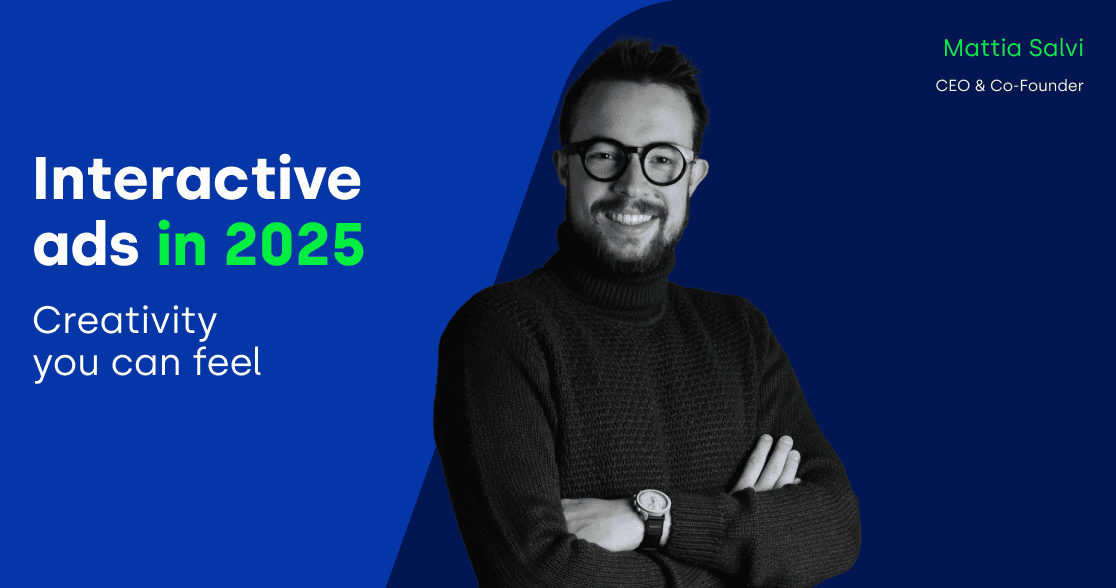Advertising in 2025: Aryel’s CEO Mattia Salvi on the next big shifts

As interaction becomes the new norm, creativity and technology are revolutionizing how brands communicate with consumers.
What will define the future of advertising in 2025? As brands strive to inspire rather than interrupt, and consumers demand more authentic and engaging experiences, the industry stands on the cusp of transformation. To unpack these changes, we spoke with Mattia Salvi, CEO and Co-Founder of Aryel. From cutting-edge immersive technologies to the rising role of social and environmental values, Mattia offers his insights on the trends that will shape advertising in the years to come.
Mattia, how do you see the advertising landscape evolving in 2025?
2025 will be a pivotal year for advertising. Reaching a broad audience won’t cut it anymore; the true measure of success will be the value derived from each interaction. Nielsen reports that only 1% of online time is spent on ad interactions. This underscores the need for every touchpoint to deliver a meaningful experience that enriches the user and reinforces brand identity. At Aryel, we believe advertising should evolve from persuasion to creating genuine, valuable relationships.
What new paradigms will shape the future of advertising?
The cultural context is shifting fast. Authenticity, lightheartedness, and depth will define tomorrow’s advertising. Today’s consumers are increasingly savvy—they expect brands to tell real stories and showcase unfiltered humanity. At Aryel, we’ve seen that authentic campaigns supported by immersive formats like AR and 3D achieve superior performance.
Simultaneously, lightheartedness is in demand. In an overcrowded digital landscape, people crave moments of escapism and humor. Brands that deliver natural, enjoyable content transform interaction into pleasure and discovery.
How do social and environmental values fit into this picture?
Gen Z and Millennials are pushing for more conscious consumption, compelling brands to demonstrate genuine commitment to social and environmental causes. Every interaction must communicate these values. Aryel’s innovative formats allow brands to share impactful messages while maintaining attention and inspiring active engagement.
Attention plays a crucial role in the future of advertising. What’s your take?
Attention is key, but it must tie back to measurable outcomes. This was a major theme in our INNOV8 Roundtables. Aryel has developed proprietary metrics—Attention Time and Attention Quality—offering advertisers concrete tools to optimize campaigns on both media and creative fronts.
How are media and formats evolving to meet new opportunities?
The media landscape is transforming rapidly, driven by new channels like Retail Media Networks (RMNs) and Connected Television (CTV). These platforms, enhanced by artificial intelligence, enable highly personalized omnichannel experiences. Meanwhile, Digital Out-of-Home (DOOH) advertising is booming, offering dynamic, contextual messaging, especially in indoor environments. Aryel’s immersive formats are already integrated into RMNs, CTV, and DOOH, enabling brands to connect with segmented audiences and achieve tangible results.
What’s your vision for the future of advertising?
The future of advertising lies in interaction, transforming each message into an engaging and memorable experience. Creativity will drive this evolution—not just to capture attention but to build authentic, lasting connections. By leveraging innovative technologies and immersive formats, brands can deliver real value, turning campaigns into opportunities for meaningful relationships with their audience. At Aryel, we’re committed to leading this change, offering solutions that combine creativity, technology, and strategy to deliver impactful results.
As we close our conversation with Mattia, one thing is clear: the advertising landscape of 2025 will reward brands that focus on genuine connection, creativity, and innovative engagement. By leveraging tools like AR, emotional data, and new media formats, advertisers can craft experiences that not only capture attention but also build lasting relationships with their audience. The future of advertising isn’t just about being seen—it’s about being felt.